



Many organisations have defibrillators, which are machines that can be used to attempt to correct someone’s heart rhythm if they are in cardiac arrest, which is vital in the first few minutes to increase the chance of survival.
Every year, around 60,000 people in the UK will have an out of-hospital cardiac arrest. Resuscitation will be attempted by the ambulance service in around 28,000 cases. Less than 10% of these will survive.
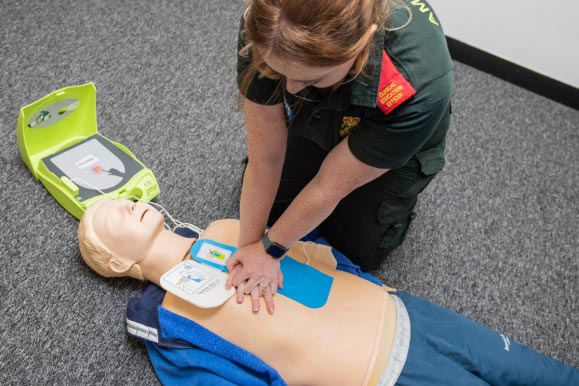
A cardiac arrest is when someone’s heart stops pumping blood around the body and they stop breathing normally. Without intervention, brain damage will begin to occur in around four minutes. After ten minutes, survival is extremely unlikely.
Giving an electric shock through the chest wall, by using an AED is often the only way a person can recover from a cardiac arrest. This can be done in the ambulance, or at hospital, or it can be done by a member of the public at the scene of a cardiac arrest if there is an AED nearby.
Bystander Cardiopulmonary Resuscitation (CPR) and their use of an AED in the first few minutes can significantly improve the chance of survival. Defibrillation within three to five minutes can increase survival rates to 50-70%.
Community AEDs can be found both in small rural villages, as well as urban cities; in fact, they can be found just about anywhere there are people. They are funded by communities, sometimes with help from local and national charities.
Available to the public 24 hours a day. Usually placed on the outside of a building.
The AED will be stored in a locked cabinet (keypad operated) that keeps the unit above 5ºC to maintain the battery.
The keypad code to open the cabinet is recorded by the North East Ambulance Service Emergency Operations Centre (999).
In the event of a life threatening emergency, someone calling 999 will be advised if there is a community defibrillator within a 500m radius, given the code to open the cabinet, and asked if someone can retrieve it.
We recommend that two community guardians are allocated to be responsible for checking both the cabinet and the AED on a weekly basis, and to work with us to reset post use.
Where there are concerns around security, we suggest considering locations that are well lit and within sight of CCTV cameras.
Most cabinets are made of either steel or a tough polycarbonate compound, which make them very secure.
Our charitable fund might make a contribtuion towards an AED purchase, we will look into this when you enquire.
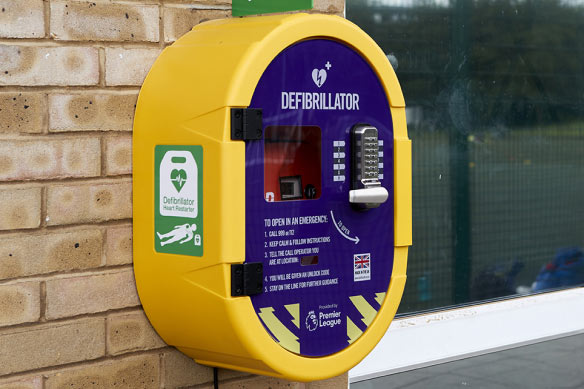
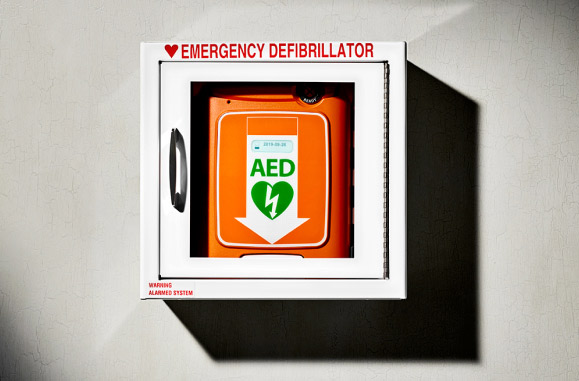
Many businesses, schools and sports centres have defibrillators on their premises. These are often located inside secured premises and do not usually need a cabinet with a keypad lock. We would encourage businesses that own a defibrillator to consider placing it in an external cabinet to open up availability but we understand this is not always suitable. If you can only make your AED accessible to the public during certain times, you can register this availability with us, it all helps.
If you would like a private AED, the Department of Education (DoE) has a scheme where you can receive a discounted rate, specifically for schools and colleges. The DoE website will have the latest information on this. Alternatively please get in touch to see if you qualify for a contribution from our Charitable Fund.
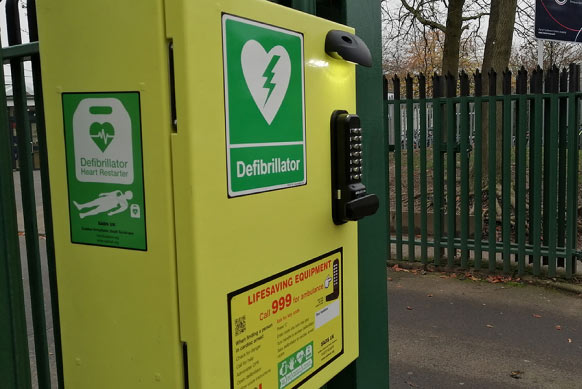
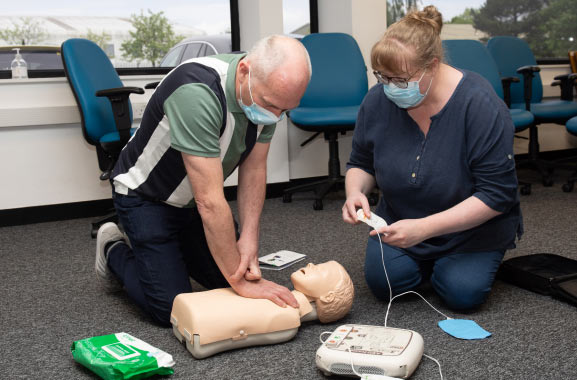
The Resuscitation Council (UK) guidelines state that the use of defibrillators should NOT be restricted to trained personnel. AEDs can be safely used by untrained members of the public. An AED will analyse the patient’s heart rhythm, and will only deliver a shock if the heart needs it, you cannot hurt someone by using it. Being aware that you can use a defibrillator and that it is easy and safe to do so, can speed up the time between turning the machine on and the first shock being delivered, if required. For this reason we offer a free, two hour familiarisation session, for those purchasing a community AED, and for a small charge we can offer this to those purchasing AEDs for private/ workplace use.
The likelihood of causing harm by performing CPR or using an AED is very small. At the time of writing this article we are not aware of any reported successful claims in the UK against a rescuer attempting to resuscitate someone having a suspected cardiac arrest. The Resuscitation Council (UK), who are responsible for developing and publishing evidence-based resuscitation guidelines in the UK, have published a user’s guide if you wish to understand more: www.resus.org.uk/cpr/cpr-aeds-andthe-law .
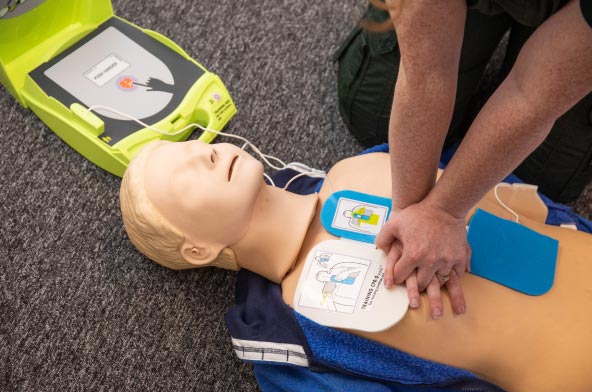
Buying an AED can be daunting due to the many different makes and models available. We have the technical knowledge and clinical experience to understand your requirements, and guide you through the purchase process.
For technical advice or support please email: firstresponder@neas.nhs.uk
For sales (inc private AED quotes) please email: commercial.development@neas.nhs.uk
If you would like to make an enquiry about AED Sales or Training then please use our